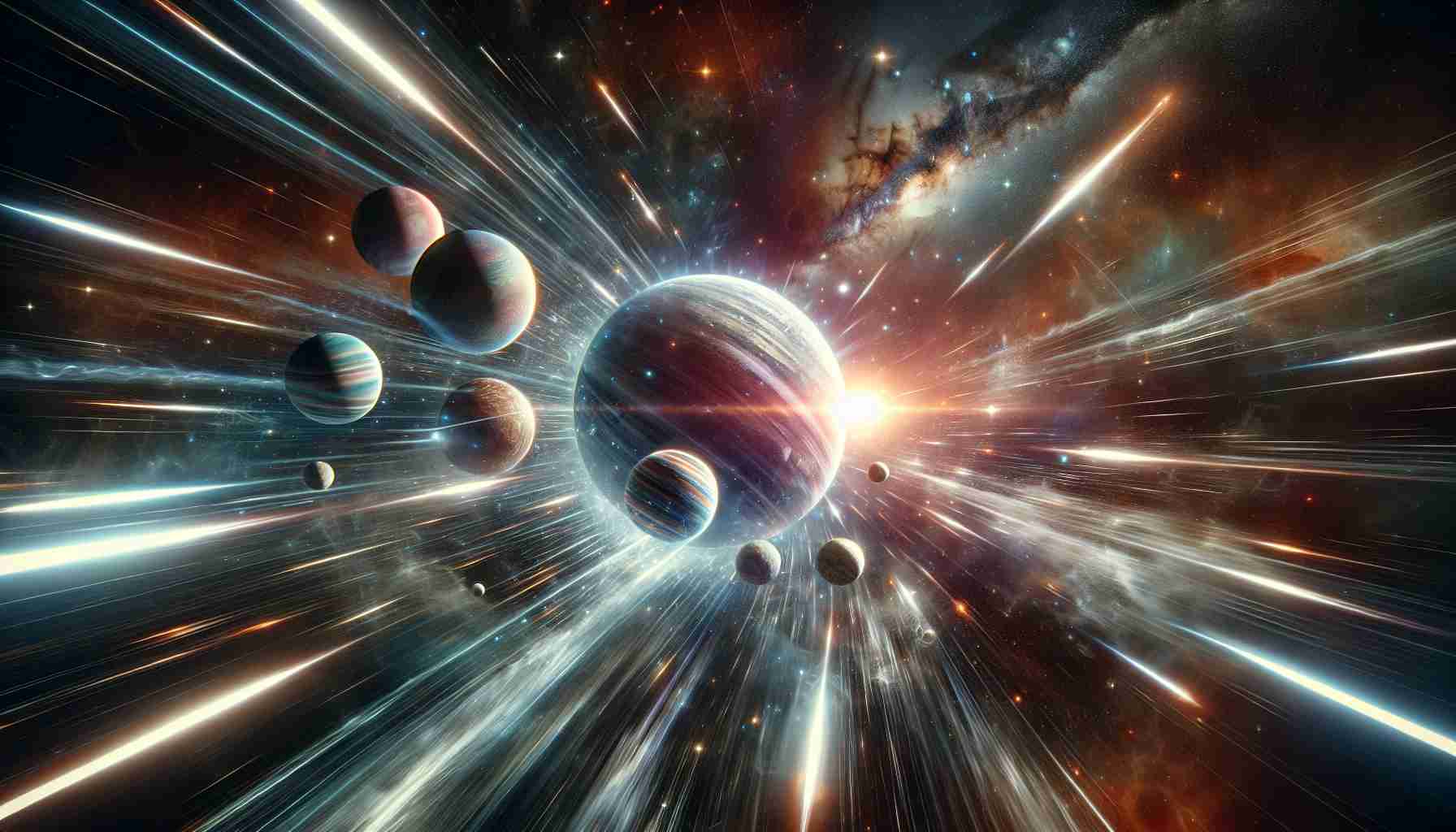- A hypervelocity planetary system is potentially moving through space at 540 km per second (1.2 million mph) near the Milky Way’s center.
- The system consists of a super-Neptune-sized exoplanet orbiting a dim, low-mass star.
- Its current location, between Venus and Earth if in our solar neighborhood, places it outside any habitable zone due to the star’s faint light.
- This marks the possible first discovery of a planet around such a high-speed star, challenging existing cosmic theories.
- The system was identified during the 2011 microlensing event MOA-2011-BLG-262, revealing two bodies potentially as a dwarf star-planet pair or a rogue planet with an exomoon.
- Future observations may confirm if it is a rogue planet-exomoon scenario, potentially expanding our understanding of cosmic phenomena.
In a cosmic spectacle akin to a galactic race, astronomers have potentially uncovered a hypervelocity planetary system hurtling through space at a breathtaking speed of 540 km per second (1.2 million mph). Nestled near the heart of the Milky Way, this enigmatic formation captivated scientists using the cutting-edge microlensing method—a phenomenon where gravitational forces magnify light akin to a natural telescope.
Visualize a massive, vibrant super-Neptune exoplanet cruising around a dim, low-mass star. If this star were in our solar neighborhood, its orbit would snugly fit between Venus and Earth. Yet, the star’s dull glow places the planet far outside any conceivable habitable zone. This discovery hints at the first instance of a planet orbiting such a high-speed stellar body—a find that could redefine our understanding of cosmic phenomena.
The celestial pairing first caught the eye in 2011 with a microlensing event dubbed MOA-2011-BLG-262, revealing two intertwined bodies—one a hulking 2,300 times heavier than its companion. Determining exact masses remains elusive, but they might be a dwarf star and its planet, or perhaps a wandering rogue planet with its exomoon companion.
Data from the acclaimed Keck Observatory and ESA’s Gaia satellite lent further clarity, situating the system within the dense Galactic bulge, a staggering 24,000 light-years from our planet. As they race across the cosmos, their path might even allow them to escape the Milky Way into intergalactic odyssey over millions of years.
Future high-resolution observations aim to solidify this system’s true identity. Should it confirm an isolated rogue planet and exomoon scenario, it could usher new chapters in our quest to understand the universe’s vast enigmas, all while capturing imaginations with its celestial ballet across our galaxy.
“Hypervelocity Planets: The Galactic Speedsters That Could Rewrite Cosmic History”
Discovering the Unseen: The Mechanics of Microlensing
Microlensing is a phenomenon that occurs when a star or planet passes in front of a more distant star from our viewpoint, magnifying the light of the background star. This method is pivotal for detecting celestial objects that emit minimal light or are obscured by other cosmic bodies. By utilizing the microlensing method, astronomers can observe distant and dim astronomical events, making it a vital tool in expanding our knowledge of the universe.
Insights into the Galactic Bulge
Located midway between our solar system and the center of the Milky Way, the Galactic bulge is a densely packed region of stars. This environment offers a rich ground for discovering unique planetary systems due to its high concentration of mass and gravitational interactions. A hypervelocity system within such a region suggests dynamic gravitational forces at play, potentially influenced by the supermassive black hole at the galaxy’s core.
Potential Scenarios and Their Implications
The hypervelocity system observed might be a dwarf star with a substantial exoplanet, or a rogue planet with a moon. Each scenario carries unique implications:
– Dwarf Star & Exoplanet: This could indicate a high-energy event that propelled the system at such a speed, challenging current models of planet-star interactions.
– Rogue Planet & Exomoon: Could provide insight into how planetary bodies might be expelled from galactic interactions and what it means for planetary system formations.
Future Observations and Implications
Ongoing and future observations using powerful telescopes like the Keck Observatory and newer satellite data from missions such as ESA’s Gaia are crucial. If confirmed as a rogue planet scenario, it could support theories about the dynamic and often violent interactions in crowded regions like the Galactic bulge. Understanding these high-speed bodies helps redefine planetary dynamics and formation theories.
Market and Technological Forecast: The Future of Space Observation Tools
The discovery underscores the growing market and interest in advanced space observation technology. As precision increases, so does the interest from both private and governmental sectors in creating more sophisticated instruments.
Pros and Cons
Pros:
– Enhances understanding of galactic dynamics.
– Unveils previously inaccessible cosmic events and formations.
– Could revolutionize theories on planetary formation and interaction.
Cons:
– High costs and technical challenges involved in capturing and analyzing such data.
– Potential data misinterpretation due to observational limits.
Join the Celestial Quest: Relevant Links
Stay connected with leading astronomical institutions to follow this research narrative. Learn more about cutting-edge discoveries and the technology behind them:
– Keck Observatory
– ESA (European Space Agency)
– NASA
This rapidly evolving field of study on hypervelocity planetary systems not only perplexes and fascinates but also opens the door to new hypotheses about the creation and evolution of planetary bodies across the universe.












